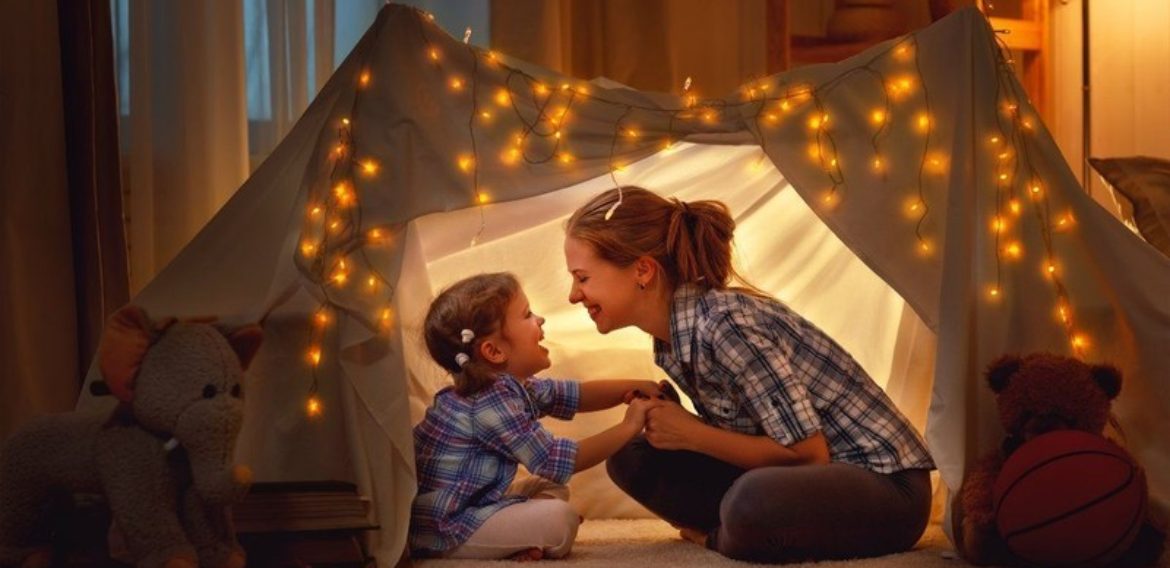- Comfort
- Light
- Grey
- Dark
Science-backed ways to create lasting memories for your child
As I strolled my daughter through our new neighborhood one day recently, I was hit with a vivid wave of nostalgia, and the memory of taking walks through the neighborhood where I grew up came flooding in. I don’t know what prompted it — the chirping birds, the style of the homes, the suburban walk (something I only recently started doing with my kids after living in cities for a number of years) or something else — but I was transported halfway across the country, back to my 7-year-old body, taking a walk around the block.
Most things I do with my kids are memorable for me, whether it’s mundane neighborhood walks or conversations about empathy and sharing (and, particularly these days, the importance of hand-washing). As far as my kids go, though — I’m never quite sure what they will remember from these early days.
We all want to create lasting memories for our children. For really young kids, though, it can be hard to figure out how to do that. But experts say our younger kids may remember more than we think.
“Children start remembering nonverbally from early in infancy,” says Rachel Barr, a psychology professor and the director of the Georgetown Early Learning Project. “Over the first two years of their life, their memories last for longer and they are more complex and more flexible. That is, as babies learn more about the world, they can integrate that knowledge with new information and expand what they know.”
Barr says that from age 2 on, kids start to speak and learn the stories of their own lives, and there are things that parents can do to increase the odds that children will remember certain moments. Here are some ways to do that, according to experts.
Provide running commentary. The best way for children to learn to tell their own stories is for parents to talk with them about what is happening. “These conversations, which can start early in children, teach the child how to encode and organize their memories and to tie them to other people and experiences,” says Barr. “It can be as simple as talking about a trip to the park, or as monumental as talking about a new sibling.” For example, my 3-year-old is still talking about a trip we took a few months ago to visit family in New York. I’d now like to think my excellent nonstop chatter on the matter — “We’re on an airplane to visit Aunt Stephie for Cousin Ro’s birthday!” — has helped cement this memory in her brain.
As my pregnant daughter shelters in place, I wait, and wonder when I’ll see her again
Talk about the moment after it’s over. Providing a running commentary while forming memories is important, but so is storytelling once the moment has ended. Judy Willis, a neurologist and former teacher, covers this topic extensively in her work, which she shared with me via email. In her article “The Neuroscience of Narrative and Memory,” Willis writes, “the experiences we have with narratives starting as young children establish supportive conditions in the brain for learning and remembering, based on a foundation of emotional connections to the experience of being read to or told stories.”
In the real world, Willis suggests following up with your child regarding things they’re interested in to help further their concentration on the subject. So if you saw a shooting star together, you might later ask them to come up with a story about the star (bonus points for a story that you work on together, allowing your child to fill in some sentences), talk about where it came from, and for school-age children, even throw in some terms related to science topics they’re studying in class.
Involve all of their senses … or at least one important one. The olfactory bulb in the brain connects directly to the hippocampus, which is vital for encoding and consolidating new memories, says Barr. This is why certain smells, such as the lotion your mom wore all the time, or the cookies your grandmother baked, evoke memories. In general, though, she recommends using as many sensory cues — olfactory, visual, auditory, tactile, etc. — as possible, which will lead to stronger memories being formed and retrieved.
Bring home a souvenir. Children between 1 and 5 years old are learning how to “time travel” — or go back and forth in their mind to create the story of their own life. Providing something tactile from an experience can help with that, says Barr. For example, during your storytelling it helps to show your child photographs you took during a particular trip or a postcard you picked up, or to bring out that soft toy Grandma and Grandpa brought the last time they visited to help jog the child’s memory.
Create multiple pathways for memory. New learning is fragile, Willis wrote in her article “Applying Learning in Multiple Contexts,” but it helps to create multiple direct opportunities for memories to occur. In laymen’s terms, Willis says this might mean expanding a particular moment to include a number of different elements. So if you enjoy looking at the clouds with your child, for example, you might invite them to talk to you about what a cloud could taste, smell and feel like, or ask them to dance or move like a fluffy cloud would. By engaging multiple areas of their brain, you’ll help them generate a more expansive opportunity for remembering.
Have them draw a picture. Another great way to help kids remember something more clearly is to have them sketch it after it happens. According to one small study of 5- and 6-year-olds in New Zealand, children who were asked to draw an event after experiencing it reported more information than children in a group who were just asked to tell about it. Drawing also helps put the focus on what your child remembers about a particular moment, as opposed to what you do. After your child has drawn the picture, Barr suggests asking them to walk you through what they drew. “They might say something like, ‘That’s the shell I picked up and put in my pocket,’ ” she says. “It might be something you don’t even remember, but they do.”
Repeat the moment. Studies have shown that repetition helps when it comes to memory, and it’s no different for kids. Willis explains why in a piece for the National Association of Elementary School Principals, “Empower Students With Brain Knowledge.” Essentially, she writes, the more an action is repeated, the more connections your child makes with it, and the greater their memory will be. “Practice makes permanent,” Willis wrote in an email to me, “because each time kids use, review, apply or remember information, skills or experiences, the stronger and more powerful — and easier to remember — the memory circuit becomes.”
impairments can frequently struggle to recall information. This is particularly true in cases where speech difficulties are due to a cognitive impairment. By incorporating various fun activities into sessions, speech pathologists in pediatric speech therapy jobs can prevent memory improvement from becoming a chore, while simultaneously helping children to improve their language skills and enhance mental organization. The following therapist resources are a good place to start.
Fill in the Blanks:
Children struggling with word retrieval speak with many pauses, use filler words, or rely on non-specific terms, such as “thing” and “stuff.” This is even true for children with expansive vocabulary — the difficult stems not in knowing the word, but in accessing the word when it is needed.
“Fill in the blanks” activities strengthen word retrieval skills, by providing children with time to think. By using common phrases – or creating sentences where the word to use is obvious – children can develop rapid retrieval skills. You can find a worksheet for this activity, as well as other word retrieval tasks, through Speech and Language Kids.
By :Cheryl Lock



 العربية
العربية